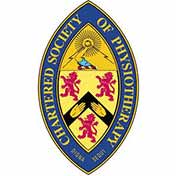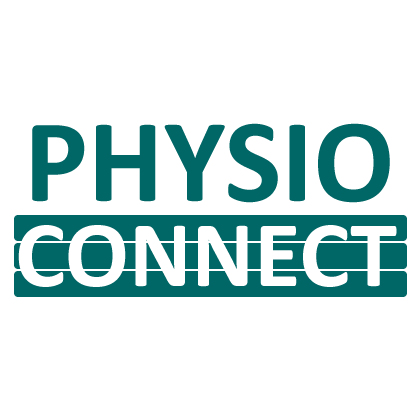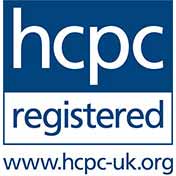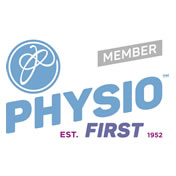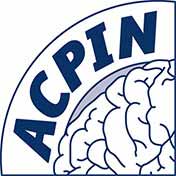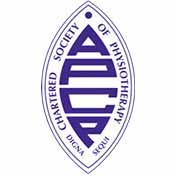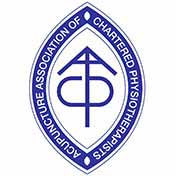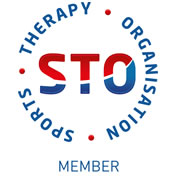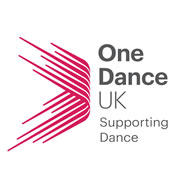Dance is a highly challenging and physically demanding form of activity and can involve many different styles of movement.
The dancer requires great strength, flexibility (ranges of movement), balance, control, co-ordination and position sense (proprioception). In addition, other qualities are required, such as expressiveness, versatility, fluidity of movement, aesthetics, and stage presence.
Dancers are both athletes who are artists, and artists who are athletes. And, in common with many sports, the physical demands of dance today are much greater than they were 30 years ago. Young dancers commence their training at an early age, and push their bodies harder and faster than ever before. They are not interested or concerned by the prospect of injury, and yet make impossible demands on their bodies striving to achieve the results they crave.
Primary injury prevention is needed, particularly in young (developing) dancers, as there are significant repetitive stresses on the body with the demands of technique, turnout, pointe work, jumping, pas de deux etc. Injuries may occur due to 'intrinsic' risk factors such as anatomical characteristics, medical history, previous injuries, and the level of dance experience/technical ability, and/or external/'extrinsic' factors such as type/duration of training, fatigue, stress, footwear, nutrition, floor surface, studio temperature etc.
Early reporting of injuries is vitally important, and can often, in many cases, prevent a relatively mild injury from developing into something that is more serious and severe, and chronic. Unfortunately, many members of the medical profession have little specific expertise of the physical, physiological and psychological stresses that accompany dance. Therefore, they may lack the experience to accurately diagnose and rehabilitate dance injuries. In addition, dancers themselves need to be better able to understand their bodies, to ultimately reduce their injury risk, whilst enhancing their performance.
 For example, it is important for the dancer to remain as active as possible whilst recuperating from injury, without returning to full class/work. The treatment approach may therefore differ somewhat from that offered to a non-dancer with a similar presentation of symptoms. A working knowledge of dance can be very helpful in these circumstances, so that understanding and communication between therapist and dancer can develop.
For example, it is important for the dancer to remain as active as possible whilst recuperating from injury, without returning to full class/work. The treatment approach may therefore differ somewhat from that offered to a non-dancer with a similar presentation of symptoms. A working knowledge of dance can be very helpful in these circumstances, so that understanding and communication between therapist and dancer can develop.
Types of injury may vary between dance styles, but some common themes emerge: Ballet dancers are reportedly the most likely group to sustain an injury (commonly muscle strains, tendinopathies (overuse), and joint/ligament sprains), followed by contemporary dancers (commonly joint then muscle problems). Musical theatre/jazz dancers are more likely to sustain muscle injuries (often at the hip and groin).
Patterns are also evident regarding the site of injury: Low back pain is the most common complaint, and this may be associated with a higher prevalence of injuries involving other joints. Problems with knees, feet and ankles are also very common. There can also be variation between the sexes, with male dancers often experiencing more problems with their lower back (jumping and pas de deux/lifting), and females reporting more problems with their feet and ankles (pointe work).
Our Specialist Dance Physiotherapist
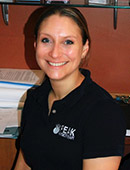 Our specialist dance physiotherapist at PEAK Physiotherapy is Sarah Joice. Sarah qualified as a physiotherapist in 1998 and has over 40 years of dance experience. She has, herself, danced from an early age, and has been trained in all dance styles. She continues to train and perform in ballet and musical theatre, and has danced in all manner of productions, from the Alhambra Theatre in Bradford to the West End. She has also taught for many years, both at local dance schools and for the Ballet Society at Leeds University (Beginners and Intermediate Ballet).
Our specialist dance physiotherapist at PEAK Physiotherapy is Sarah Joice. Sarah qualified as a physiotherapist in 1998 and has over 40 years of dance experience. She has, herself, danced from an early age, and has been trained in all dance styles. She continues to train and perform in ballet and musical theatre, and has danced in all manner of productions, from the Alhambra Theatre in Bradford to the West End. She has also taught for many years, both at local dance schools and for the Ballet Society at Leeds University (Beginners and Intermediate Ballet).
As a physiotherapist, Sarah has worked extensively with student and professional dancers alike, including audition screening at The Northern School of Contemporary Dance in Leeds, full-time students from Northern Ballet School (Manchester), Hammond (Chester), Elmhurst (Birmingham) and Tring Park (Hertfordshire), and Company members from Northern Ballet Theatre and Phoenix Dance Company.
In 1998, she established the Physiotherapy Service for the Louise Browne Yorkshire Ballet Scholarship Centre in York, and worked for many years at the auditions and weekly classes and also at their Regional Ballet Seminar at Horsforth in Leeds.
PEAK Physiotherapy Limited is listed on the One Dance UK - Healthcare Practioners Directory.
Sarah currently runs clinics in Garforth and Otley. For any further information about this service or to make an appointment to see Sarah, please telephone Sarah on 07908 684441.
Warm up
The importance of an effective warm up cannot be stressed too strongly. Warm up exercises do not necessarily need to move too far but should be vigorous enough to raise the heart rate and rate of breathing, to increase blood flow through the muscles, and to lubricate the joints. An efficient warm up should raise the body's core temperature by 1-2°. This helps to increase elasticity in the muscles and reduce friction in the joints. It also improves the transmission of nerve impulses into the muscle fibres which improves performance.
Global (large-body) movements, including some light aerobic activities (such as light jogging or jumping jacks) are recommended, along with 'limb shaking' and gentle flexibility movements to wake/warm up and lubricate the spine, hips, knees and ankles etc. Your warm up should include movements of the nature you are about to perform. The more closely your warm up matches your dance steps, the quicker you will 'feel' the dance movements.
Be aware of your body and concentrate on the areas that you feel need more work on a particular day (for example; tight hips, stiff lower back, poor balance)
Remember:
- Early stretches are to wake up the muscles not to increase flexibility
- Warm up exercises should build from slow to fast and from simple to complex
- Limit the number of grand plies and watch your technique at all times (grand plie is not specific to most dance styles and can put severe strain on the knee joints)
- Start with small jumps and only progress to bigger jumps late in the exercise sequence.
Cooling down
There is a much higher incidence of dancers warming up before class/rehearsal/ performance than there is cooling down afterwards. Just as it is not a good idea to start exercise suddenly, it can be unsafe to stop suddenly too!
An abrupt switch from exercise to a resting position causes blood to pool in the lower limbs, and the heart and other body systems slow down too quickly. Cooling down can also help to eliminate waste products that accumulate in the muscles during exercise, which can prevent those sore and aching muscles and joints over the following few days...
An effective cool down may consist of some of the movements just done in class/rehearsal, but in a more leisurely manner, gradually winding down over 5-10 minutes. It is then advisable to do some gentle stretching, focusing on the main muscle groups that have been used (usually quadriceps, hamstrings, calf, back, abdominals). Some resistance work (for example using Theraband) may also be incorporated into this phase.
It is the dancers' individual responsibility to take control of their own warm up and cool down routine, and to ensure that this becomes an integral part of your dance practice.
Safe Stretching
Static
The range of movement available during a non-moving stretch. This depends upon the structure of the joints, the length of the surrounding muscles, and the elasticity of the other soft tissues.
Dynamic
This represents how much of the available range of movement you can actually use whilst dancing (for example; a developpe, a grand jete en avant). This level of flexibility may not be the same as your static flexibility, as you can only fully use what you have the strength and the co-ordination to control.
Optimal flexibility is the result of good alignment and muscular balance. If you have balanced flexibility, you will be more stable and your weight will be transferred more symmetrically through your joints. In faulty alignment, too much stress and strain is put through the muscles which increases tension and reduces overall flexibility. Learn to relax into your stretches and you will achieve much better results.
A Word about Pointe Work
There is a common misconception that 12 is the age to start pointe work. This is not strictly correct as there is no particular age at which pointe work should be commenced! Pointe should be considered according to the stage of development of the dancer, and their level of strength and control.
There is no disadvantage to a child commencing pointe work at a later age, however it can be detrimental to start them before that child is both physically and technically ready. There will be far less injury risk and she will be able to achieve correct and safe technique far more readily thus progressing more quickly and increasing her confidence more rapidly.
Pointe work should not begin until growth has settled in the feet. She should have strength in her feet and ankles and full control of all the relevant joints. She also needs stability and control of turnout at her hips, and a strong core/trunk. Certainly, pointe should be avoided if the feet and body are still soft, floppy and very mobile. Care should also be taken if the child has hypermobility syndrome, particularly of the feet and ankles. Whilst this foot type looks very attractive when pointed, it is also the most at risk of injury when 'en pointe'. Dancing in pointe shoes with an 'over-pointed' foot can strain the front of the foot and ankle, and cause instability of balance, thus increasing the risk of falling off pointe and sustaining ligament sprains or worse, a fractured foot or ankle.
It is important that all students commencing pointe work have a comprehensive programme of exercises to strengthen all the muscles of the foot and ankle so that the feet are well controlled and in a correct anatomical alignment.
Screening Programme
In addition to the treatment and management of acute and chronic injuries, PEAK Physiotherapy is able to offer dancers of all ages and levels of ability, access to a full musculoskeletal screening process. This is a particularly useful tool for the young dancer who may be unsure of their capacity to tolerate dance training, and/or who may be considering the audition process for full-time training.
It can help to identify potential problem areas which may, if undetected, later lead to injury, it can address any postural and/or biomechanical imbalances, and can be used to generally improve technical control and ability. In other words, we can prevent an injury developing rather than having to treat it when it does!
Within the assessment is an analysis of posture, an examination of ranges of movement (spine, shoulders, hips, knees, feet and ankles), an observation of hypermobility and/or muscle imbalance, and the dancer is checked for turnout ability, flexibility, any joint or tendon problems (particularly hips, knees and feet, Achilles and hamstrings), foot type and leg length discrepancies.
Advice and any appropriate treatment/exercises can then be commenced to address any issues that may have been highlighted. Such management may include:
- Manual Therapy techniques (joint mobilisation, soft tissue release, acupuncture etc.)
- Exercise Therapy (stretches, strengthening, core control training)
- Posture Correction and Advice
- Pilates-based Exercises
- Dance-Specific Training and Progression of Technique

